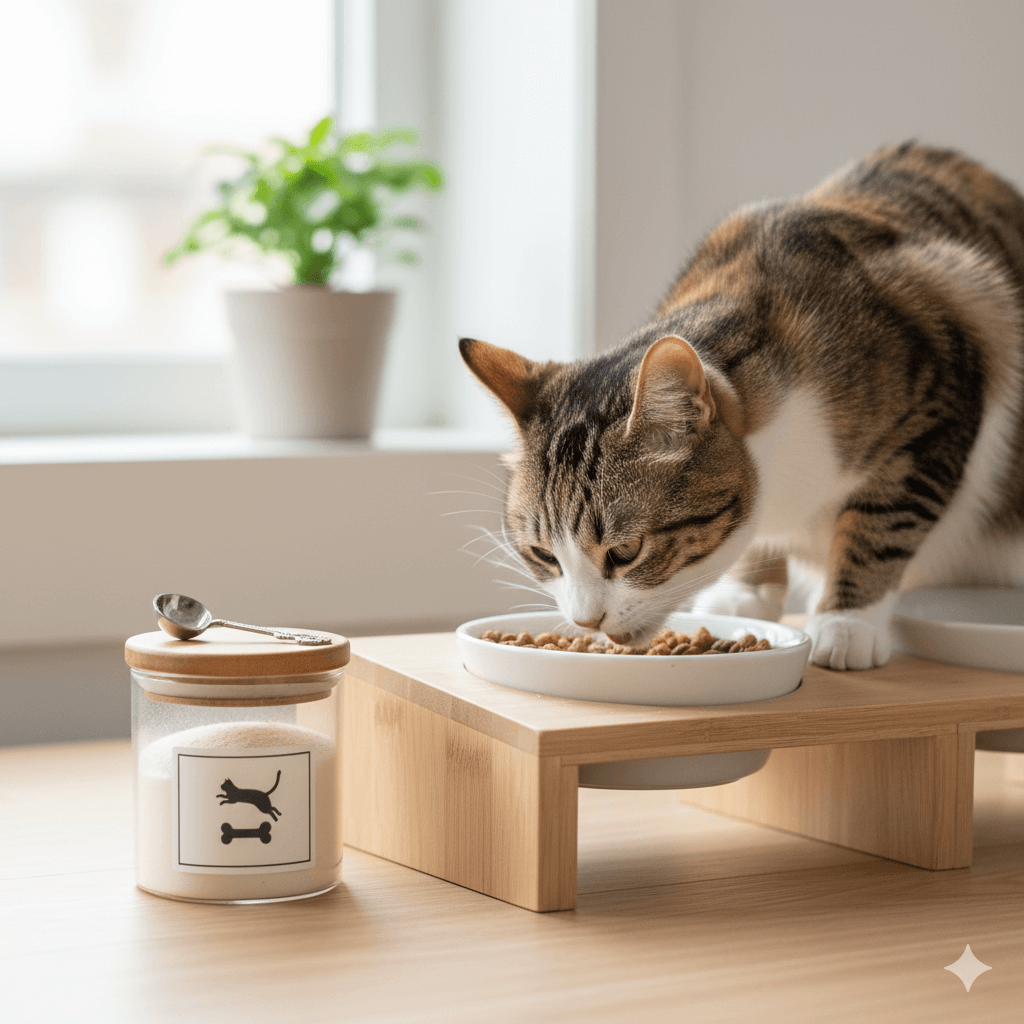Can Cats Eat Nectarines?
When it comes to treating our feline friends, many pet owners wonder whether human foods like nectarines are safe for cats. Nectarines, with their juicy sweetness and vibrant flavor, may seem like a tempting snack to share with your cat. However, as obligate carnivores, cats have specific dietary needs that differ greatly from ours. While small amounts of certain fruits can be safe, others pose potential risks due to their natural sugars, acidity, or even pits. In this blog post, we’ll explore whether cats can eat nectarines, the benefits and risks involved, and how to safely introduce them into your cat’s diet if appropriate. Let’s dive into everything you need to know about feeding nectarines to your furry companion.
Potential Risks of Feeding Nectarines to Cats
While nectarines might seem harmless, they come with several risks that every cat owner should be aware of. Understanding these hazards ensures you make informed decisions about your cat’s diet.
Choking Hazard from the Pit:
The large, hard pit of a nectarine can pose a serious choking risk if swallowed or cause intestinal blockages if ingested.Cyanide Risk in the Pit:
The pit contains trace amounts of cyanogenic glycosides, which can release cyanide when broken down—a toxic substance for cats.High Sugar Content:
Nectarines are naturally high in sugar, which can upset your cat’s digestive system and potentially lead to obesity or diabetes over time.Upset Stomach:
Even small amounts of nectarine flesh can cause vomiting, diarrhea, or other gastrointestinal issues in sensitive cats.Allergic Reactions:
Some cats may develop allergic reactions to unfamiliar foods, including itching, swelling, or difficulty breathing.
These risks highlight why caution is essential when considering giving nectarines—or any human food—to your cat. Always prioritize their health and safety.
Benefits of Feeding Small Amounts of Nectarine Flesh (If Appropriate)
In rare cases, tiny portions of nectarine flesh may offer minor nutritional benefits—but only under strict conditions. Here’s what you should know before offering this fruit.
Hydration Boost:
Nectarines contain a high water content, which can help keep your cat hydrated, especially during hot weather.Vitamin A Contribution:
This vitamin supports healthy vision, skin, and immune function, though cats primarily require it from animal-based sources.Antioxidant Properties:
The antioxidants in nectarines, such as vitamin C, can support overall cellular health in moderation.Low-Calorie Treat Option:
Compared to processed treats, plain nectarine flesh is lower in calories and free from artificial additives—if given sparingly.Mental Enrichment:
Introducing new textures and flavors can stimulate your cat’s curiosity, provided they tolerate the food well.
While these benefits exist, they must be weighed against the potential downsides. Always consult your veterinarian first.
Check this guide 👉Can Cats Eat Anchovies? Best 7 Expert Tips!
Check this guide 👉Can Cats Eat Pineapple Leaves? Best 7 Expert Tips!
Check this guide 👉Can Cats Eat Tortilla Chips? Best 7 Expert Tips!

Safe Alternatives to Nectarines | Risks of Unsafe Food Choices |
|---|---|
Blueberries (in moderation) | Grapes and raisins (toxic to cats) |
Watermelon (seedless and peeled) | Onions and garlic (damage red blood cells) |
Plain pumpkin puree | Chocolate (contains theobromine) |
Cooked carrots (unsweetened) | Raw dough (ferments in the stomach) |
Small pieces of apple (core removed) | Alcohol or caffeinated drinks |
How to Safely Introduce Nectarines to Your Cat
If you decide to give your cat a taste of nectarine, it’s crucial to take precautions to minimize risks. Follow these guidelines to ensure a safe experience.
Remove the Pit Completely:
Always discard the pit to prevent choking, cyanide exposure, or intestinal blockage.Cut into Tiny Pieces:
Offer only small, bite-sized portions of the flesh to reduce the risk of choking or digestive upset.Limit Portion Sizes:
A teaspoon or less is sufficient—never exceed this amount to avoid overwhelming their system.Monitor for Reactions:
Watch your cat closely after feeding them nectarine for signs of discomfort, allergies, or digestive issues.Consult Your Veterinarian First:
Seek professional advice before introducing any new food, especially one outside their typical carnivorous diet.
By following these steps, you can mitigate risks while allowing your cat to enjoy an occasional fruity treat.
Signs Your Cat May Be Struggling After Eating Nectarines
Even with precautions, complications can arise if your cat consumes nectarines improperly. Watch for these warning signs to act quickly if something goes wrong.
Vomiting or Diarrhea:
These symptoms indicate that your cat’s digestive system is struggling to process the fruit.Lethargy or Weakness:
A sudden lack of energy could signal poisoning or another serious reaction.Difficulty Breathing:
Labored breathing may suggest an allergic reaction or cyanide toxicity from the pit.Loss of Appetite:
Refusal to eat meals after trying nectarine could point to nausea or internal irritation.Excessive Drooling:
Drooling might indicate oral irritation caused by acidic compounds in the fruit.
Recognizing these signs early allows you to seek veterinary care promptly, preventing further complications.
Common Mistakes to Avoid When Feeding Fruits to Cats
Feeding fruits to cats requires careful consideration to avoid mistakes that could endanger their health. Here are some pitfalls to watch out for.
Ignoring Portion Control:
Even safe fruits can harm your cat if fed in large quantities, leading to digestive upset or weight gain.Forgetting to Remove Seeds or Pits:
Many fruit seeds and pits contain toxins or pose choking hazards, making removal essential.Assuming All Fruits Are Safe:
Not all fruits are cat-friendly; grapes, cherries, and citrus fruits are particularly harmful.Skipping Veterinary Advice:
Always consult your vet before introducing new foods to ensure they align with your cat’s specific dietary needs.Overlooking Signs of Discomfort:
Ignoring subtle signs like drooling or lethargy can delay treatment for adverse reactions.
Avoiding these mistakes ensures a safer and healthier experience for your cat.
Alternatives That Mimic the Benefits of Nectarines
If you’re hesitant about feeding nectarines, there are plenty of alternatives that mimic their benefits without the associated risks.
Hydrating Foods Like Watermelon:
Seedless watermelon provides hydration and a sweet taste without the sugar overload of nectarines.Blueberries for Antioxidants:
These tiny berries are rich in antioxidants and vitamins, making them a healthier option for cats.Pumpkin Puree for Digestion:
Plain pumpkin puree aids digestion and can soothe upset stomachs, unlike sugary fruits.Cooked Carrots for Vitamins:
Unsweetened cooked carrots provide beta-carotene and fiber without added sugars or acids.Meat-Based Treats for Carnivorous Needs:
High-quality meat-based treats cater to your cat’s natural dietary preferences and nutrient requirements.
These alternatives allow you to cater to your cat’s instincts while keeping them safe.
Understanding Your Cat’s Natural Instincts Around Fruits
Cats are obligate carnivores, meaning their bodies are designed to thrive on a meat-based diet. Understanding their instincts helps explain their limited interest in—and tolerance for—fruits like nectarines.
Lack of Sweet Taste Receptors:
Cats lack the ability to taste sweetness, so their attraction to fruits like nectarines is likely curiosity-driven rather than flavor-based.Nutritional Gaps in Plant-Based Foods:
Fruits don’t provide the essential amino acids and nutrients cats need, making them nutritionally irrelevant to their diet.Curiosity Over Hunger:
Cats may investigate fruits out of curiosity, mistaking them for novel objects rather than food sources.Instinctual Preference for Protein:
Their hunting ancestry drives them toward protein-rich foods, leaving little room for plant-based snacks.Sensitivity to New Foods:
Cats’ digestive systems are delicate, and sudden changes in diet can disrupt their balance, causing discomfort or illness.
By recognizing these behaviors, you can better address your cat’s needs in a safe and controlled manner.
Frequently Asked Questions About Cats and Nectarines
Are nectarines toxic to cats?
While the flesh isn’t highly toxic, the pit contains cyanide precursors, making it dangerous if chewed or ingested.
Can kittens eat nectarines?
Kittens have more sensitive digestive systems, so it’s best to avoid giving them nectarines altogether.
What part of the nectarine is safe?
Only the soft flesh, in very small amounts, is considered safe—but always remove the skin and pit first.
How often can I give my cat nectarines?
Rarely, if at all. Nectarines should not be a regular part of a cat’s diet due to their sugar content.
What should I do if my cat eats a nectarine pit?
Contact your veterinarian immediately to assess the situation and prevent potential poisoning or blockages.
Prioritizing Your Cat’s Health When Offering Human Foods
Feeding nectarines to your cat can be a double-edged sword, offering mild hydration benefits but posing significant risks if mishandled. While cats are curious creatures who may show interest in your snacks, their unique dietary needs mean most human foods—including nectarines—are best avoided. By understanding the potential dangers, choosing safer alternatives, and consulting your veterinarian, you can ensure your cat stays healthy and happy. Remember, your feline friend relies on you to make the best dietary choices for them—so always prioritize their well-being above all else.
Understanding Bone Supplement for Cats: Best 7 Expert Tips! – Safe, vet-approved guidance for strong feline bones & balanced nutrition.
Bone Supplement for Dogs: Best 7 Expert Tips! – Expert guide to calcium, collagen & bone health for every life stage.
Understanding Can Cats Get Sunburn: Best 7 Expert Tips! – Protect your feline from UV damage with vet-backed prevention strategies.
How to Train a Seizure Alert Dog: Best 7 Expert Tips! – Learn expert-backed steps to nurture natural instincts into reliable, life-saving seizure alerts.




